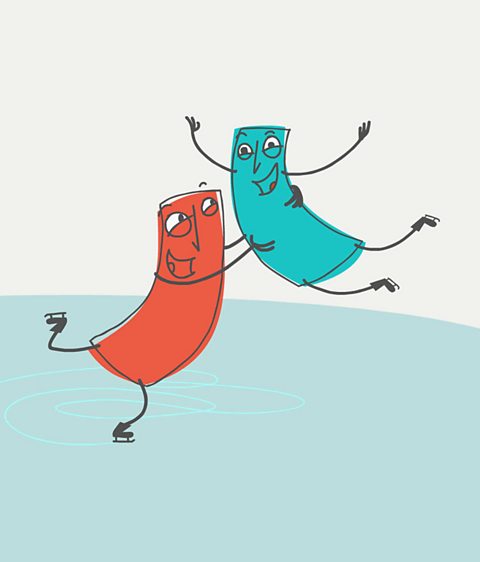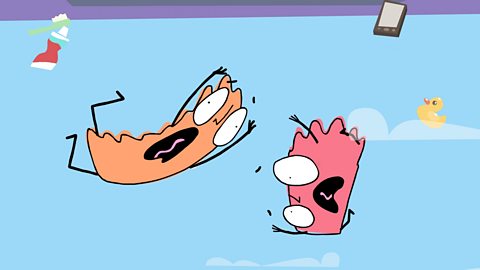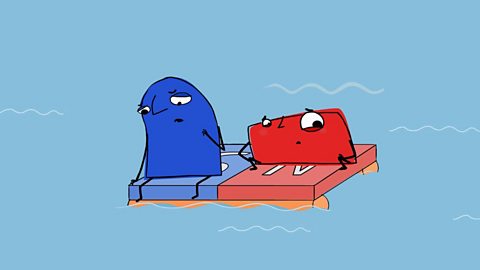What is friction?
Friction is a force between two surfaces that are sliding, or trying to slide, across each other. For example, when you try to push a book along the floor, friction makes this difficult.
Friction always works in the direction opposite to the direction in which the object is moving, or trying to move. Friction always slows a moving object down.
Watch: The effects of friction
Explore the effects of friction on this ski slope.
Why do we need friction?

The amount of friction depends on the materials from which the two surfaces are made. The rougher the surface, the more friction is produced. Friction also produces heat. If you rub your hands together quickly, you will feel them get warmer.
Friction can be a useful force because it prevents our shoes slipping on the pavement when we walk and stops car tyres skidding on the road. When you walk, friction is caused between the treadAs a noun, this word describes the rubber part of a tire or the underside of a shoe that makes contact with the ground. on shoes and the ground. This friction acts to grip the ground and prevents sliding.
Sometimes we want to reduce friction. For example, we use oil to reduce the friction between the moving parts inside a car engine. The oil holds the surfaces apart and flows between them. The reduced friction means there is less wear on the car's moving parts and less heat produced.

Activity 1: Fill the gap
Activity 2: Quiz
Bitesize Primary games. gameBitesize Primary games
Play fun and educational primary games in science, maths, English, history, geography, art, computing and modern languages.

More on Forces
Find out more by working through a topic
- count5 of 5

- count1 of 5

- count2 of 5

- count3 of 5
